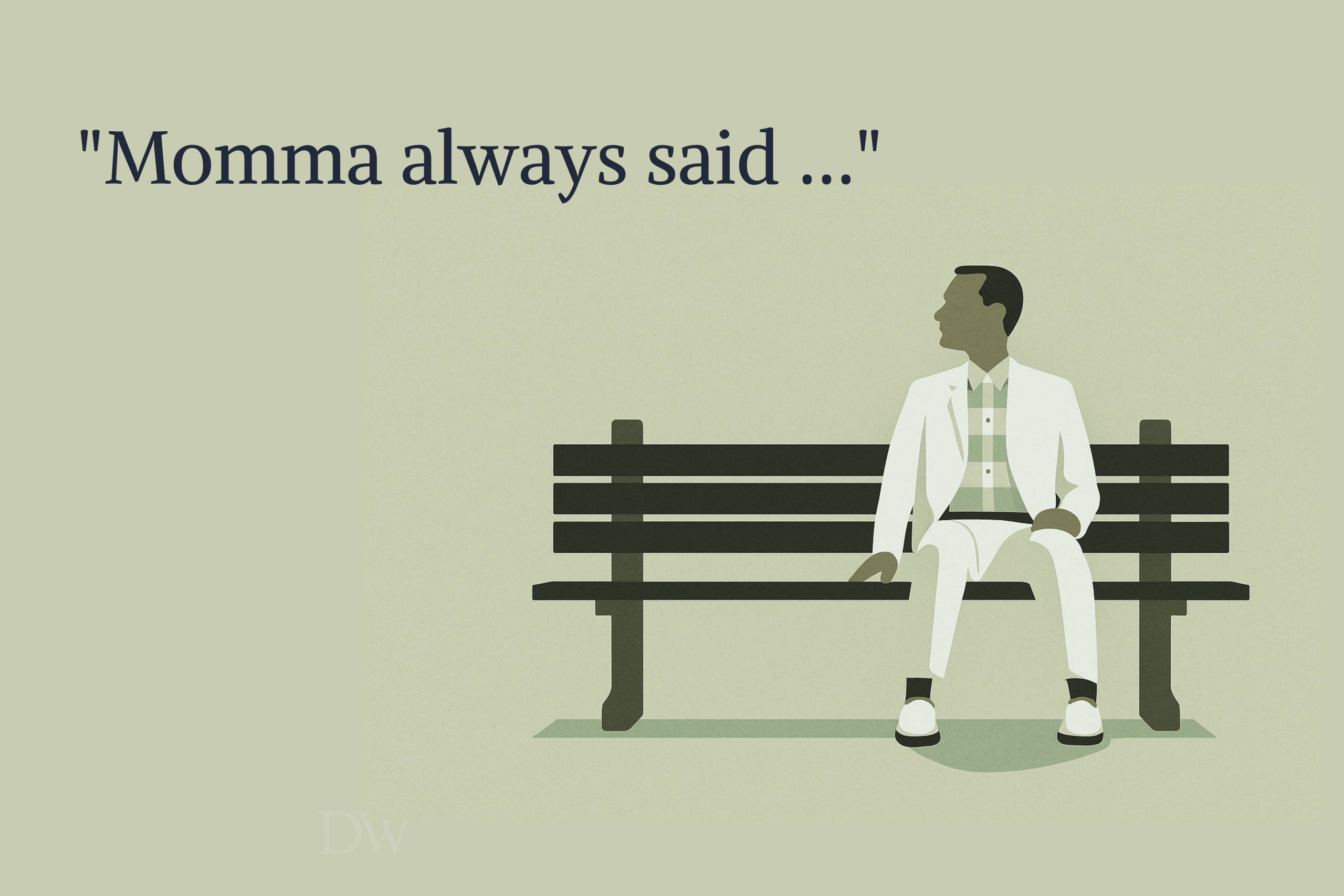
Q1. “What would you like to do?”
A1. “I’ve worked hard to build this wealth; I want it to stay in the family for generations.”
Q2. “What good will it provide the family?”
A2. “Hmmm … not sure.”
This kind of exchange between client and advisor happens all too often. The first instinct of the G1 is that the wealth should be “preserved”. And this preservation needs to be long term – for generations.
That in turn leads to discussions about structuring and asset protection, and about investment strategies and asset allocation.
But something really important is missing.
My late father would tell me from time to time: “I don’t need to work anymore. I’m building assets for the future.” What he said was 100% correct. But there was never any discussion about what the future looked like or when it would happen.
Discussion like these have things backward.
To paraphrase Forrest Gump’s mother: “wealth is as wealth does”.
It’s not about having or preserving the wealth for generations, it’s about how that wealth will make a material impact on the lives of your family and the world around you. What are you actually going to do with it? And how will that achieve the goals you have for your family?
What does this mean in practice?
Working with a family heading towards a wealth transition, I developed “the 40 year plan”. The premise was simple: the G2 will receive X; what to do with it?
Rather than a plan of how to invest it, we started “below the line” – with expenses. What would it be used for? Helping the kids with education & housing, lifestyle & wellbeing support, family holidays, philanthropy.
That’s the important stuff. That’s what it’s for. So that’s where to start.
We modelled the family’s expenses over 40 years, and then worked backwards: in order to support those outflows, what target return (after inflation) would be required?
That was one key input into the investment strategy.
This is essentially a tactical business plan that answers the question: “what is it for?”
That question can be answered by doing a values articulation exercise with the family, then agreeing on a set of shared values and purpose that drives decisions. This is my preferred way to work with families. But whether or not they choose to work with a values foundation, the tactical execution is essential.
In one case, this approach helped answer an important question: do we keep it together or split it up? The family came up with an innovative solution. Only a small core remained together – enough to fund education and regular family holidays. The rest was split between the G2s to give them the autonomy to invest and use as they wanted, rather than be bound together.
Thinking in practical terms like this can help families strike a health balance between the present and the future.
Conversation Starters:
What does your family wealth do to improve your lives?
What policies do you have for how family wealth is made available for the benefit of family members?
Further Reading
Is Your Financial Success Leading to Your Family’s Failure? 5 Signs It Could Be
Why You Should Manage Your Wealth Like A Business
4 Wealth Planning Considerations For Clients With Illnesses Or Disabilities
5 Huge Lies About Generational Wealth
7 Proven Strategies to ‘Winning’ the Great Wealth Transfer
How can I talk with my teenager about wealth and purpose?
Intergenerational Wealth Shifts and the Power of Ikigai
